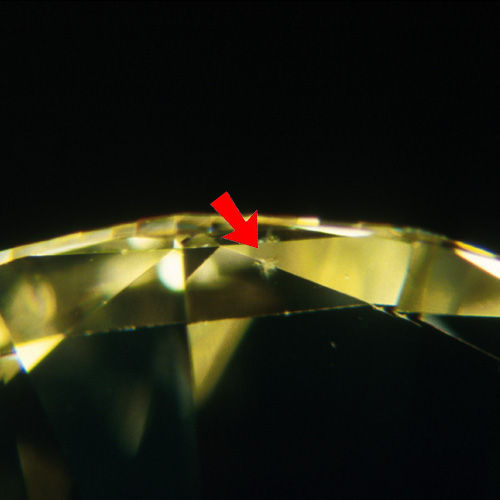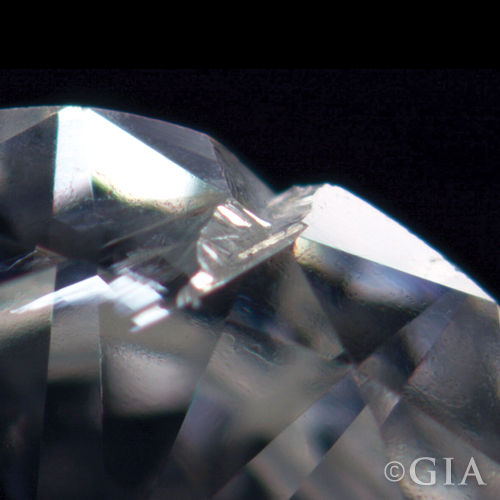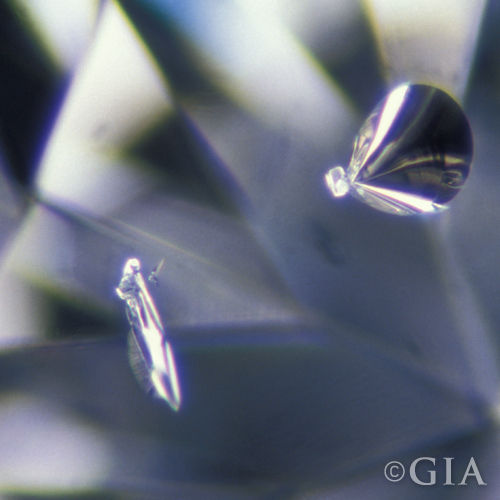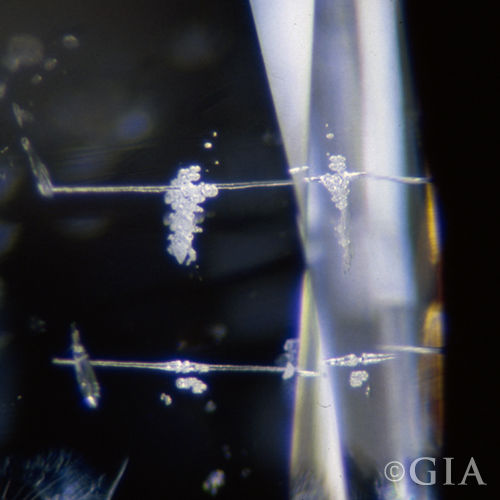
Natural diamonds emerge as a product of carbon subjected to intense heat and pressure deep within the earth, a process that gives rise to imperfections during their formation. These imperfections manifest as internal characteristics referred to as 'inclusions' and external flaws known as 'blemishes.'
The GIA diamond clarity scale encompasses six categories, encompassing a total of 11 clarity grades.

- No internal or external characteristics
- Less than 1% of all diamonds are FL clarity
- A Flawless diamond is incredibly rare because it’s nearly impossible to find a diamond 100% free of inclusions

- Some small surface blemishes may be visible under a microscope on IF diamonds
- IF diamonds have no inclusions within the stone, only surface characteristics set the grade
- Visually eye clean

- VVS diamonds have minuscule inclusions that are difficult even for trained eyes to see under 10x magnification
- VVS clarity is rare and results in an eye clean appearance
- Characteristics are minuscule and difficult to see under 10x magnification, even to a trained eye

- Minor inclusions ranging from difficult (VS1) to somewhat easy (VS2) to see at 10x magnification
- Great Value for budget friendly.

- Inclusions are noticeable at 10x magnification
- IF eye clean, SI diamonds are often the best value
- SI2 inclusions may be detectable to a keen unaided eye, especially when viewed from the side
- At Inner Circle, we do not recommend anything below VS diamonds.



- I clarity diamonds have obvious inclusions that are likely to be visible and impact beauty
- Inner Circle does not sell I clarity grade diamonds. Even for loose diamonds for settings, we uses VS clarity grade.
Tip:
Numerous misconceptions surround diamond clarity, with some falsely asserting that opting for a higher clarity grade is essential to avoid visible imperfections or that a superior grade leads to increased sparkle. However, both claims are inaccurate.
Inclusions, typically detectable only under magnification by a trained eye, prompt the use of the term "eye clean" to denote diamonds where inclusions are too minuscule to be visible without magnification.
A strategic starting point for your search, allowing you to optimize your budget, is exploring the Very Slight Included (VS) grades. These grades ensure that inclusions are inconspicuous without the aid of magnification.
While diamond clarity plays a pivotal role in determining its beauty and value, it's imperative to recognize that the shape and size of a diamond also impact its clarity. Therefore, an ideal diamond selection involves considering all four Cs as a comprehensive guideline.

As diamonds undergo their natural formation deep within the earth, they acquire inherent characteristics or "birthmarks." These slight irregularities and features become visible to a skilled grader under 10x magnification. Beyond merely serving as identifiers for distinguishing between synthetic and natural diamonds, these characteristics play a crucial role in determining the overall quality of the diamond. Here are some common diamond inclusions, accompanied by brief explanations:

Very small feathers that extend from the gridle surface into the stone; can result from the cutting process.

A tiny area of impact accompanied by very small, root-link feathers; typically occurs at a facet junction.

Open spaces or gaps within the diamond caused by crystal inclusions that have fallen out or by gas bubbles during the diamond's formation.

A shallow opening caused by damage to the stone’s surface that typically occurs at a girdle edge, facet junction, or culet.

A group of tiny, closely spaced pinpoint inclusions that form a hazy area.

A mineral crystal contained in a diamond.

Small fractures within the diamond, resembling the appearance of a feather.

A small, concentrated area of crystal distortion; can be white or dark, and might have a thread-like or pinpoint-like appearance.

A portion of the rough diamond’s original surface that dips below a polished diamond’s surface.

Lines, angles, or curves that might appear whitish, colored, or reflective, or affect transparency at 10x; caused by irregularities in crystal growth.

Laser drilling within a diamond that creates a surface-reaching feather, or expands a pre-existing feather around a dark inclusion so that it reaches the surface. The feather then provides access for bleaching to decrease the visibility of the inclusion.

Diamond crystals that extend to the diamond's surface, resembling knots.

A tiny, surface-reaching tunnel produced by a laser light beam.

Long, slender crystals resembling needles, often transparent or semi-transparent.

Larger, distinct crystals within the diamond, which can vary in shape and color.

A series of pinpoints, clouds, or crystals that forms in a diamond’s growth place; associated with crystal distortion and twinning planes.
All images are magnified to provide you with closer detail. Photography from GIA.
Understanding these inclusions and their characteristics enables a skilled grader to assess and grade the quality of a diamond, contributing to the overall evaluation of its uniqueness and value.
Comments